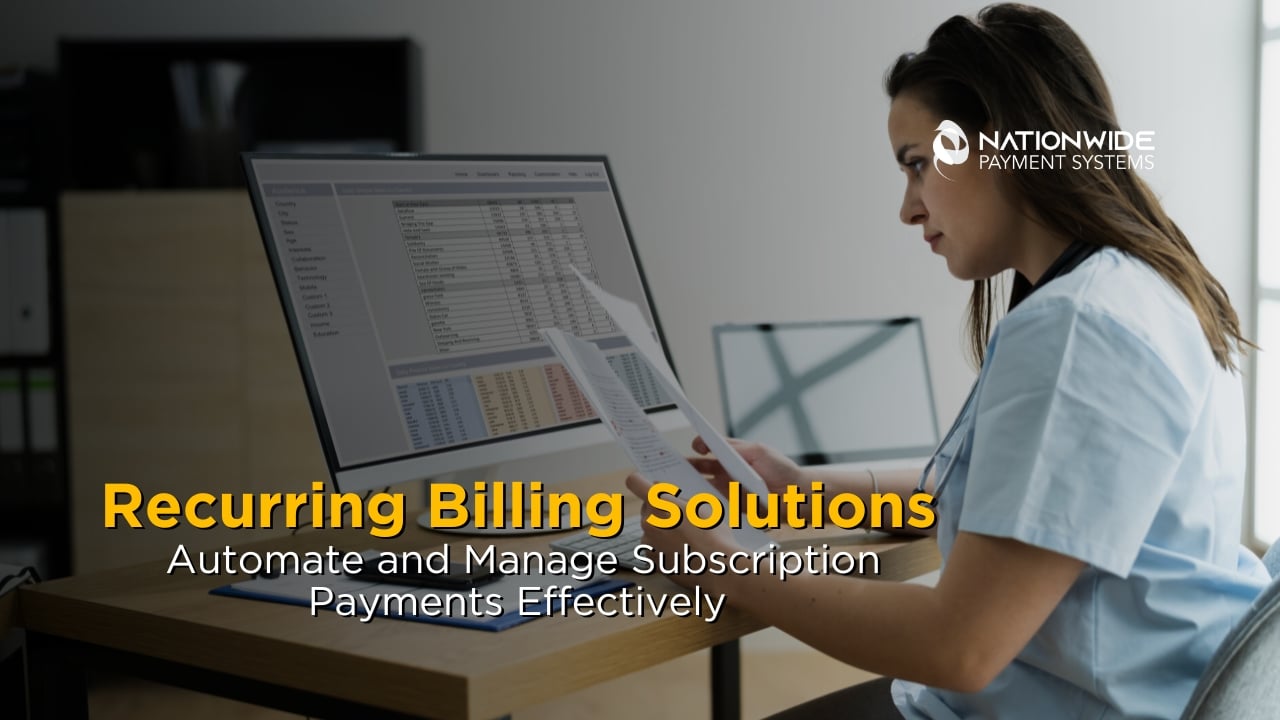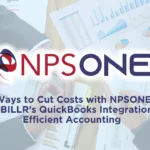AI Overview
Recurring Billing Solutions: Automate and Manage
Subscription Payments Effectively
Recurring billing automatically charges customers on a set schedule, creating steady
income and cutting down on manual work for subscription businesses. This article
explains how recurring billing works, its benefits, and why many industries depend on
such systems. It also guides businesses in choosing, setting up, and growing their
subscription payment platforms, focusing on solutions like clickbillr.
In this blog post, we’ll break down:
- What dual pricing is (and what it’s not)
- Why Visa cares—and how they enforce compliance.
- Two fully compliant ways to display dual pricing.
- Common mistakes to avoid.
- All your fee structure options.
- How Nationwide Payment Systems helps you implement it right.
How Does Recurring Payment Processing Work?
Once a customer signs up, the business securely stores their payment details. From there, the system takes care of:
-
Invoice creation using pre-set templates
-
Payment processing through secure gateways to verify and complete transactions
-
Sending confirmation receipts to both the customer and the business
-
Handling failed transactions by retrying payments or notifying customers to update details
Additional features like pro-rated billing, discounts, and CRM or ERP integration give businesses more control over managing subscriptions and making informed decisions.
How Recurring Payment Processing Works
Recurring payments start when a subscription business securely collects and stores a customer’s payment information. The system automatically charges the customer at regular intervals (e.g., monthly or quarterly), generates an invoice, and shares confirmation receipts.
Key Steps:
-
Generate invoices from pre-set templates
-
Send billing details through a payment gateway to verify and process payments
-
Provide payment confirmations to both customer and service provider
-
Handle failed payments by retrying transactions or notifying customers
Advanced features such as proration, discounts, and CRM/ERP integrations help businesses efficiently manage subscription levels and make smarter decisions.
Benefits of Automatic Billing Software
Automatic billing tools streamline and enhance business operations by:
-
Ensuring reliable cash flow with timely payments
-
Reducing manual errors and administrative costs
-
Providing analytics for customer retention, billing performance, and revenue trends
-
Enhancing the customer experience through uninterrupted service
-
Ensuring compliance with standards like PCI-DSS and GDPR
With automation, companies can make informed choices about pricing strategies and promotional offers.
Industries That Rely on Recurring Billing
Recurring billing is essential for industries that depend on consistent revenue and ongoing engagement:
-
SaaS providers
-
Digital media and streaming platforms
-
Telecommunications companies
-
Online education platforms
-
Membership-based services (gyms, subscription boxes)
-
Home service businesses (pest control, HVAC, landscaping, etc.)
Choosing the Right Subscription Payment Solution
When evaluating a subscription billing system, consider:
-
Integration with tools like QuickBooks or WooCommerce
-
Scalability, pricing, and reliability
-
Customization, usability, and customer support
-
Compatibility with Credit Cards, ACH, Apple Pay, and Google Wallet
-
Security compliance and customer transparency (e.g., click-to-cancel features)
Reading reviews and case studies can help assess real-world performance. Platforms like clickbillr are often highlighted for their robust support and seamless integrations.
Essential Features of Subscription Management Tools
Top-performing tools offer:
-
Automated billing and flexible subscription plan creation
-
Revenue tracking and customizable customer messaging
-
Multi-currency and language support
-
CRM, ERP, and accounting software integrations
-
Tokenization, encryption, and fraud detection
-
Scheduled billing and automated failed payment management
Importance of Payment Gateway Integration
Payment gateway integration is vital for fast, secure payment processing. It enables direct communication with banks and allows for various payment methods—credit cards, bank transfers, and digital wallets.
This reduces payment friction, streamlines transactions, simplifies reconciliation, and supports timely refunds and reporting.
The Power of Customization
Custom billing plans, personalized invoices, and targeted communications allow businesses to:
-
Match billing cycles to customer preferences
-
Reduce disputes and cancellations
-
Build customer loyalty and improve brand perception
-
Lower operational costs through smarter workflows
Automating Your Subscription Billing Setup
To implement recurring billing:
-
Define your subscription tiers and cycles
-
Connect billing tools with customer management software
-
Use secure payment gateways for real-time transactions
-
Automate reminders and notifications for upcoming and failed payments
-
Add dunning management tools to recover revenue
Segmenting users and applying predictive analytics helps refine models and personalize outreach.
Handling Failed Payments
Effective dunning practices include:
-
Automatic retry attempts
-
Timely email reminders
-
Self-service portals for updating payment details
-
Analytics to monitor dunning success
A fast response reduces churn and ensures predictable income.
Metrics to Track for Recurring Billing
Track these metrics to measure performance and customer value:
-
Monthly Recurring Revenue (MRR)
-
Churn Rate
-
Customer Lifetime Value (CLTV)
-
Average Revenue Per User (ARPU)
Real-time dashboards help spot trends and adjust strategies as needed.
Security and Compliance in Billing Systems
Secure systems like NPSONE prioritize:
-
Data encryption at rest and in transit
-
Regular penetration testing and vulnerability scans
-
Two-factor and role-based access controls
-
Industry-standard compliance (e.g., PCI DSS, GDPR)
-
Transparent privacy policies to build trust
Scaling Billing with Business Growth
Modern billing platforms scale by:
-
Using cloud infrastructure for real-time data handling
-
Supporting multi-currency payments and global compliance
-
Offering API-based integrations and modular design
-
Running consistent performance checks
Businesses should upgrade their billing tools when facing bottlenecks from outdated tech or growing complexity.
Leading Platforms in 2025
Top subscription platforms now offer intuitive dashboards, advanced automation, and deep integrations. Tools like clickbillr are popular for:
-
Easy integration with QuickBooks, e-commerce, and CRM platforms
-
Customizable invoicing and analytics
-
Scalable pricing for startups and enterprises alike
Highlights:
-
Users report improved revenue retention and fewer billing errors
-
Case studies show gains in MRR and CLTV
-
Particularly valuable for SaaS and online educators
Final Thoughts
Recurring billing systems are the backbone of today’s subscription economy. With automation, security, analytics, and scalability, platforms like clickbillr empower businesses to grow efficiently, reduce churn, and deliver superior service.
Let me know if you’d like this adapted for a presentation, landing page, or sales pitch—it would be a great candidate.
CLICK HERE TO FIND MORE ABOUT OUR PROGRAMS
FAQ: Frequently Asked Questions
What is recurring billing?
Recurring billing is the automatic process of charging customers at regular intervals—monthly, quarterly, or annually—for ongoing products or services.
How does recurring billing benefit my business?
It provides predictable revenue, reduces administrative work, improves customer retention, and simplifies financial forecasting.
What payment methods can I use with recurring billing?
Most systems support credit/debit cards, ACH bank transfers, and digital wallets like Apple Pay and Google Wallet.
Is recurring billing secure?
Yes. Reputable platforms follow strict security protocols including PCI-DSS compliance, encryption, and secure authentication methods.
How are failed payments handled?
Systems usually retry failed payments automatically, send reminder emails, and allow customers to update their payment info via a self-service portal.
Can I customize billing cycles or offer trial periods?
Absolutely. Many platforms allow you to define flexible billing intervals, offer free trials, prorated charges, and promotions.







